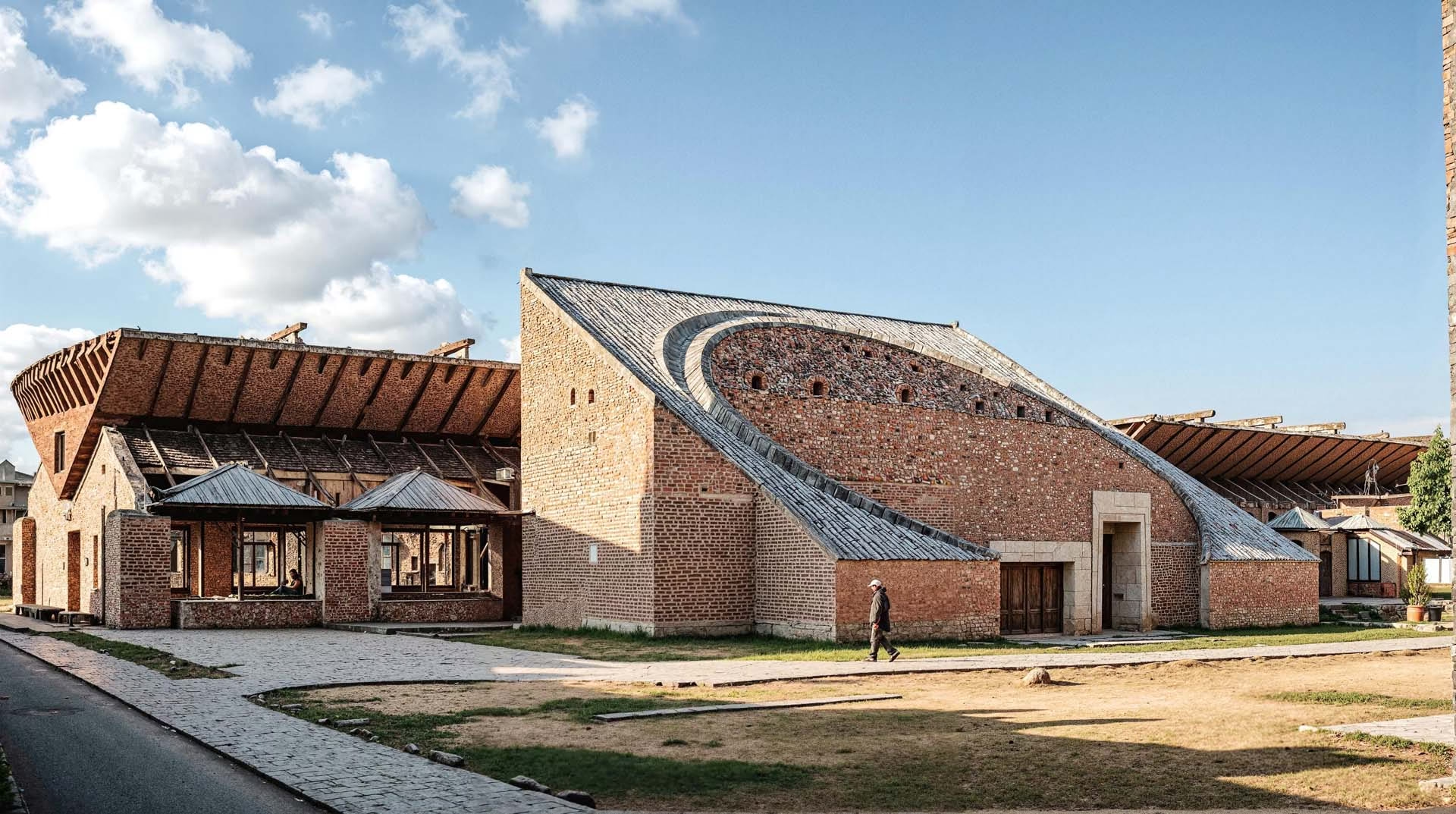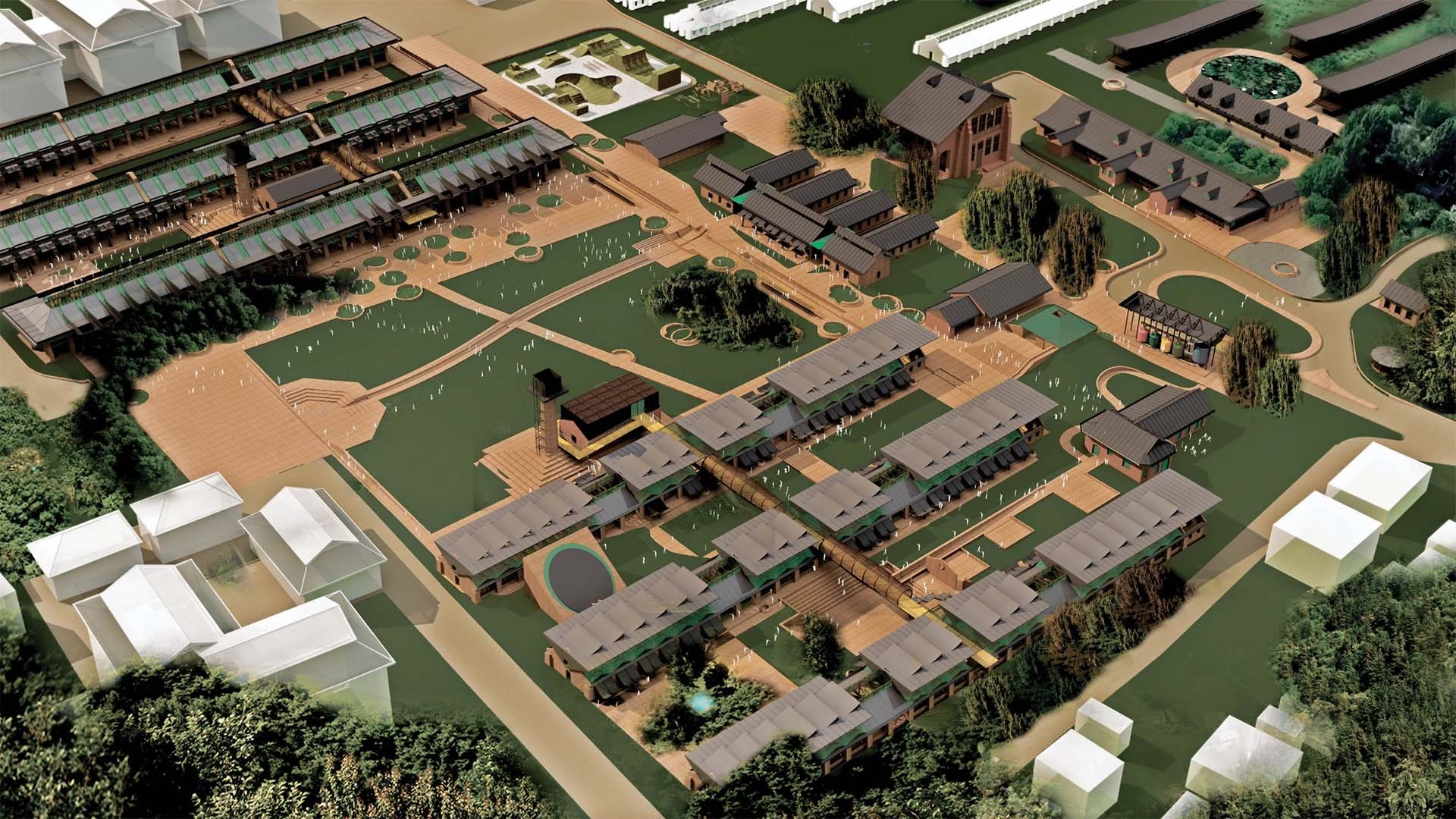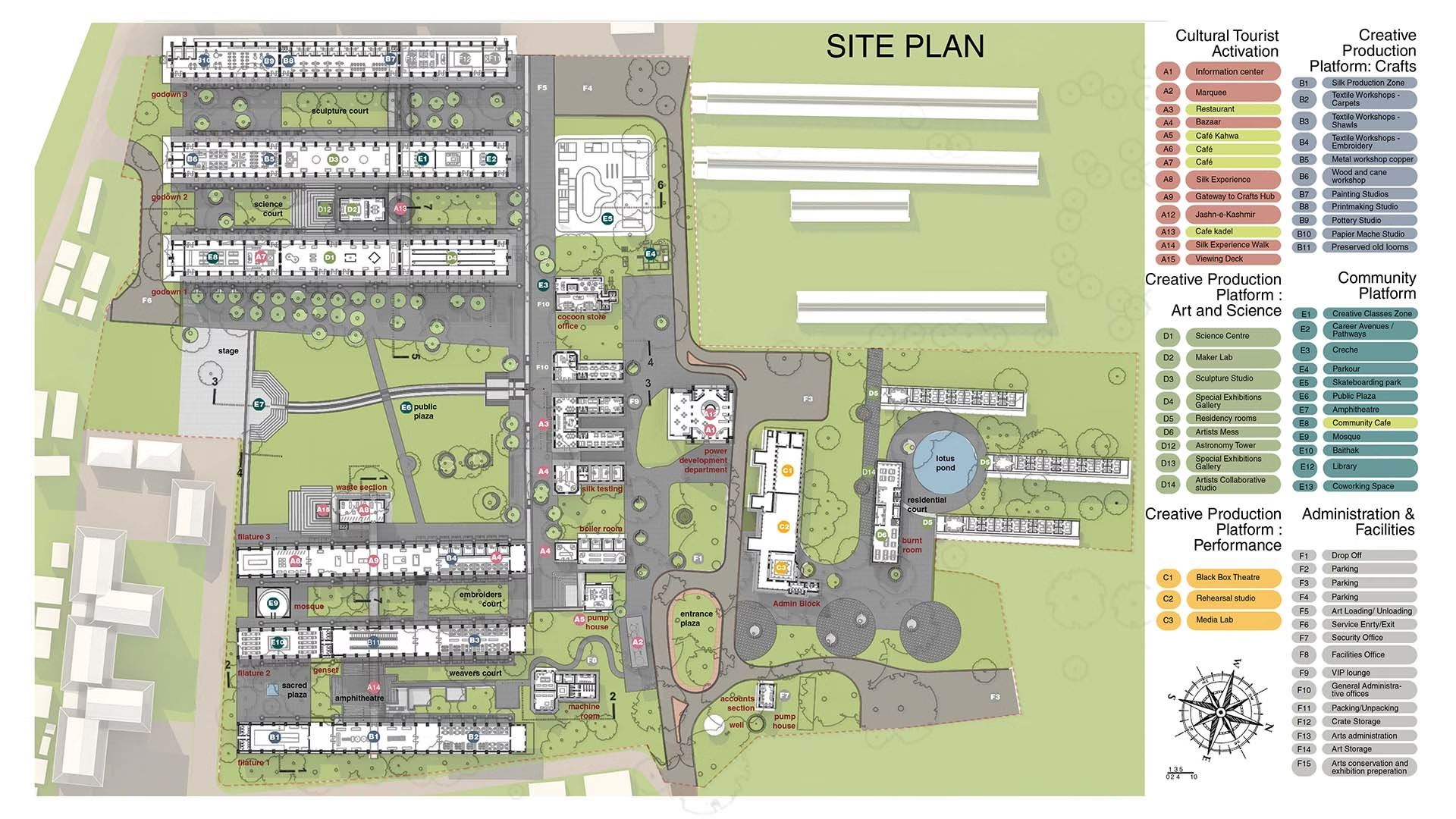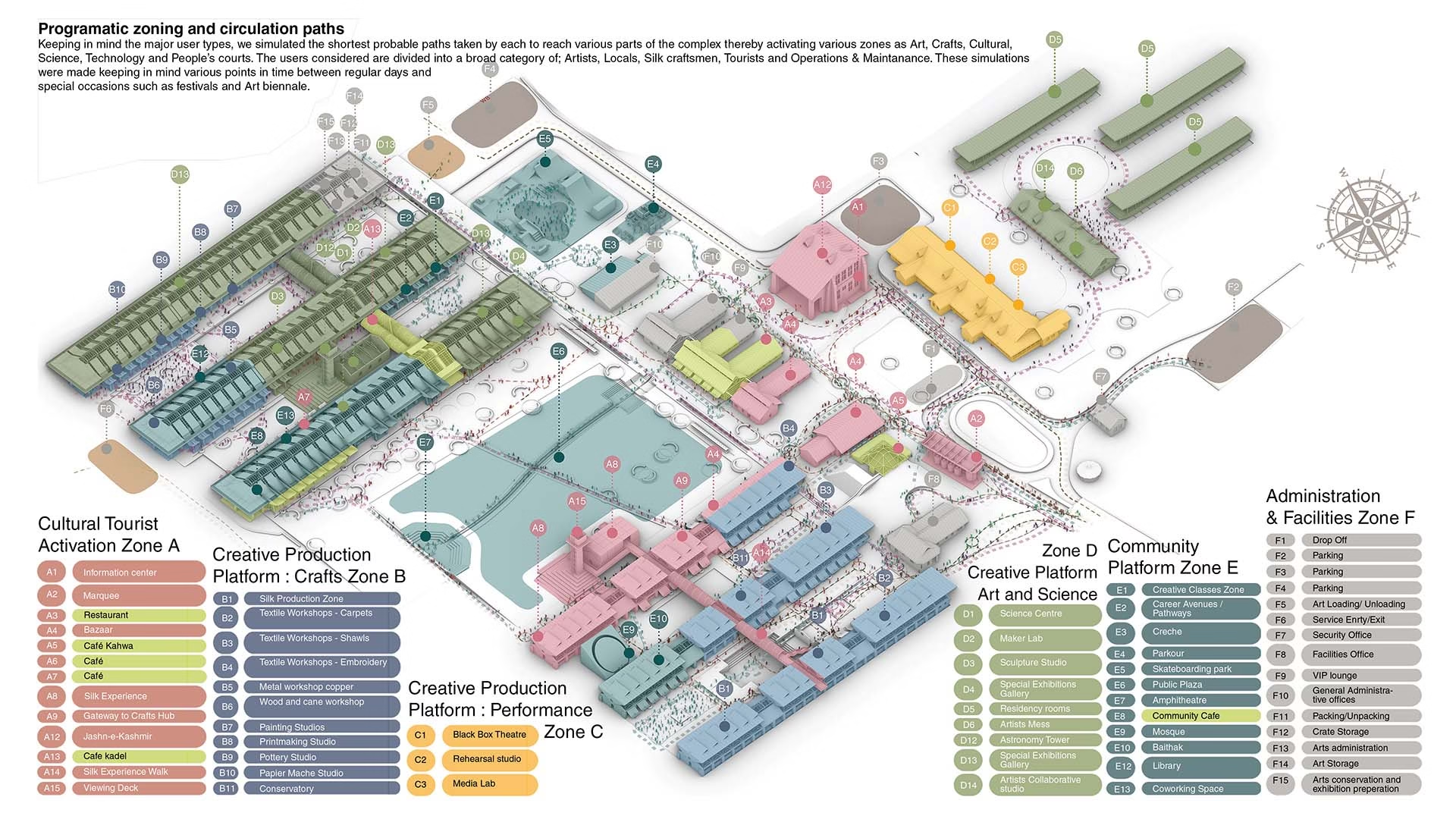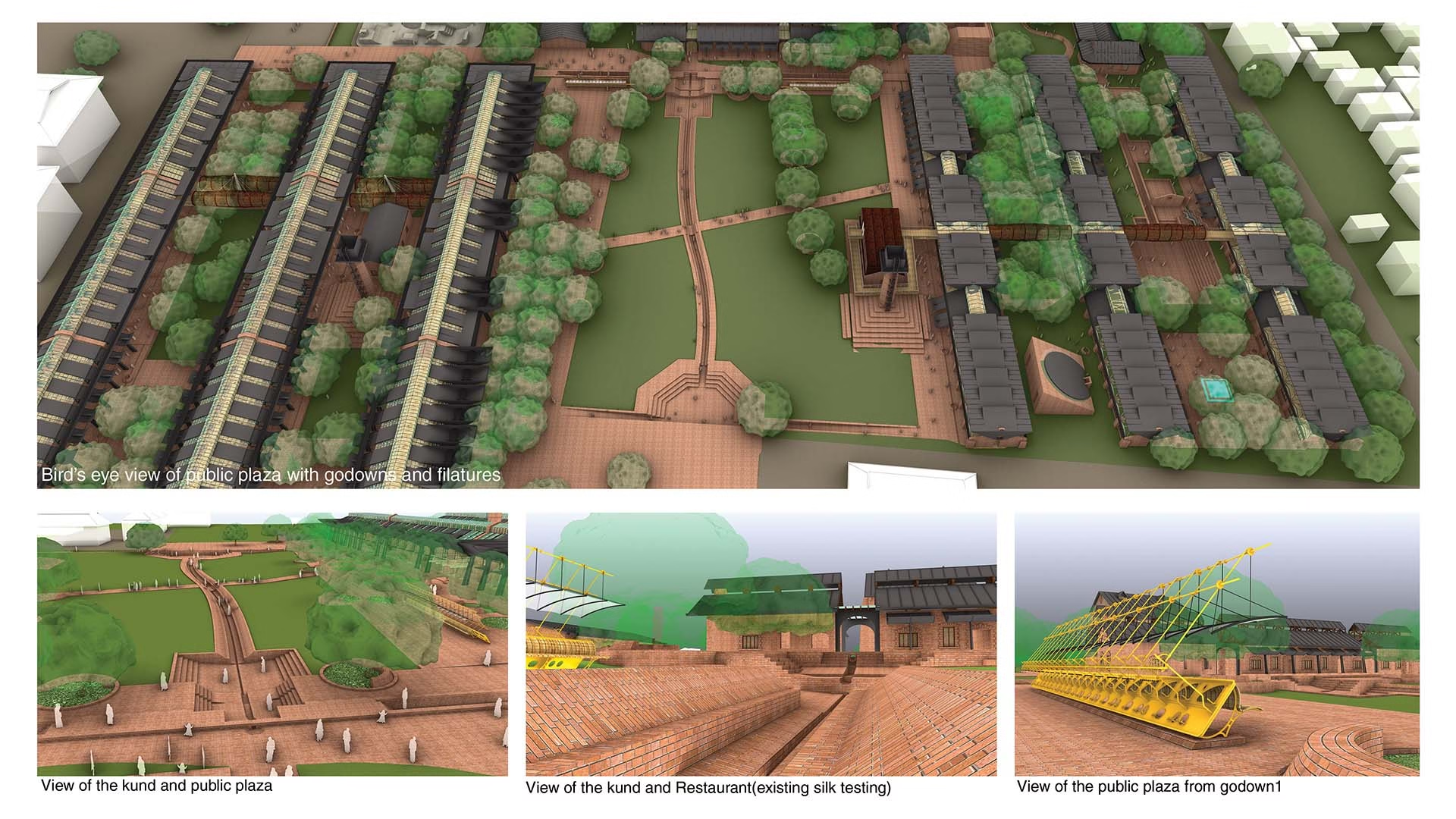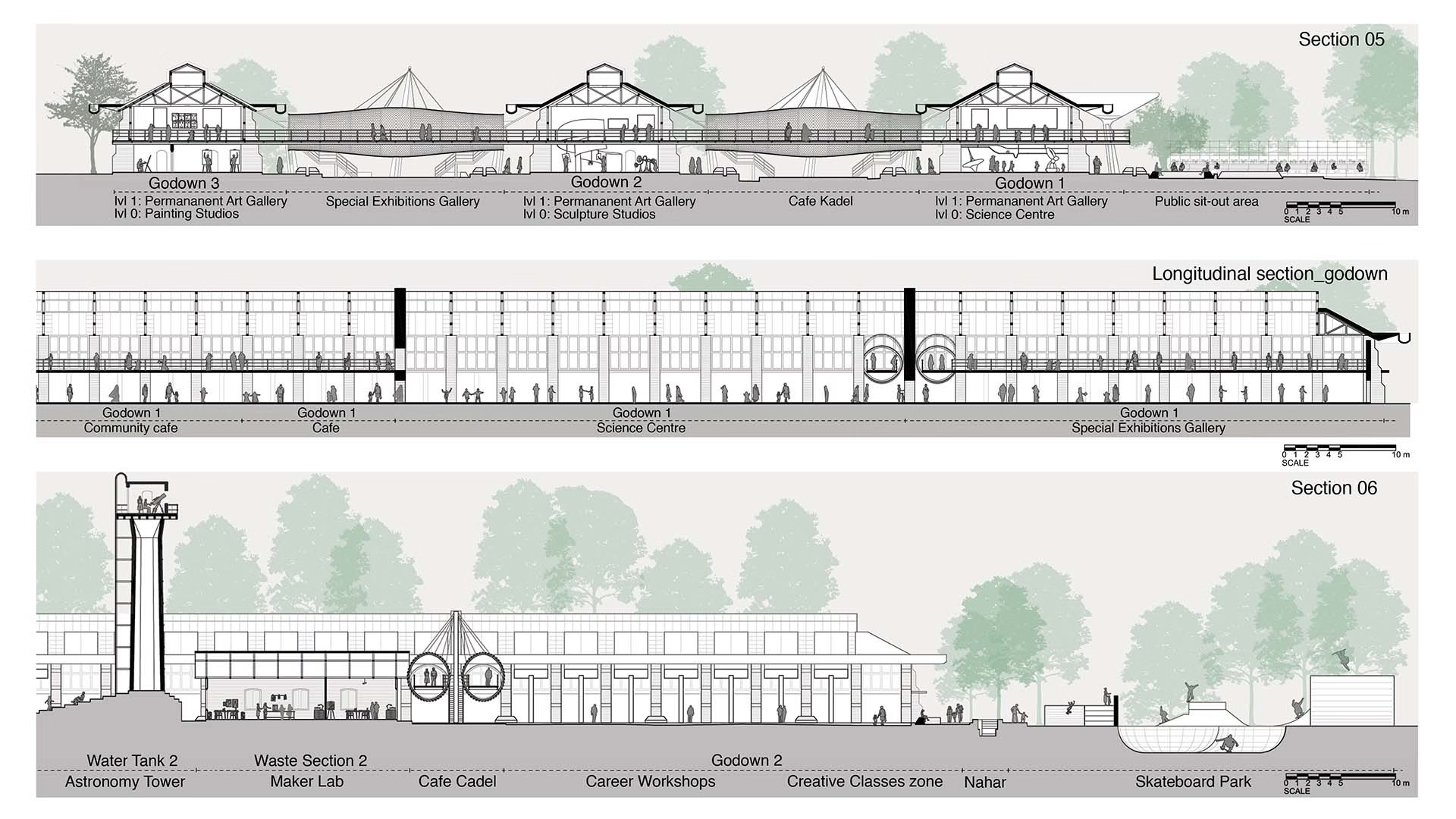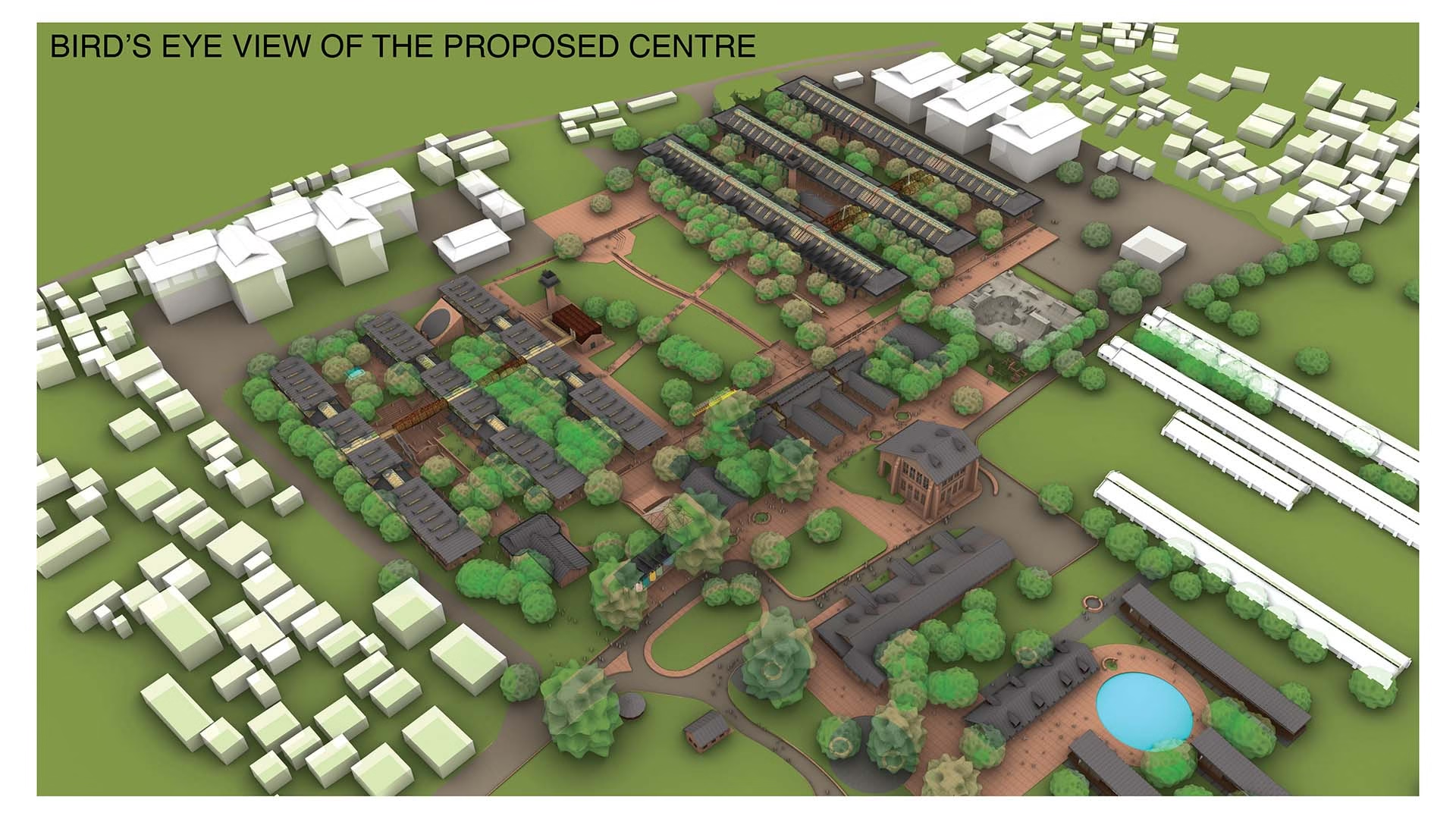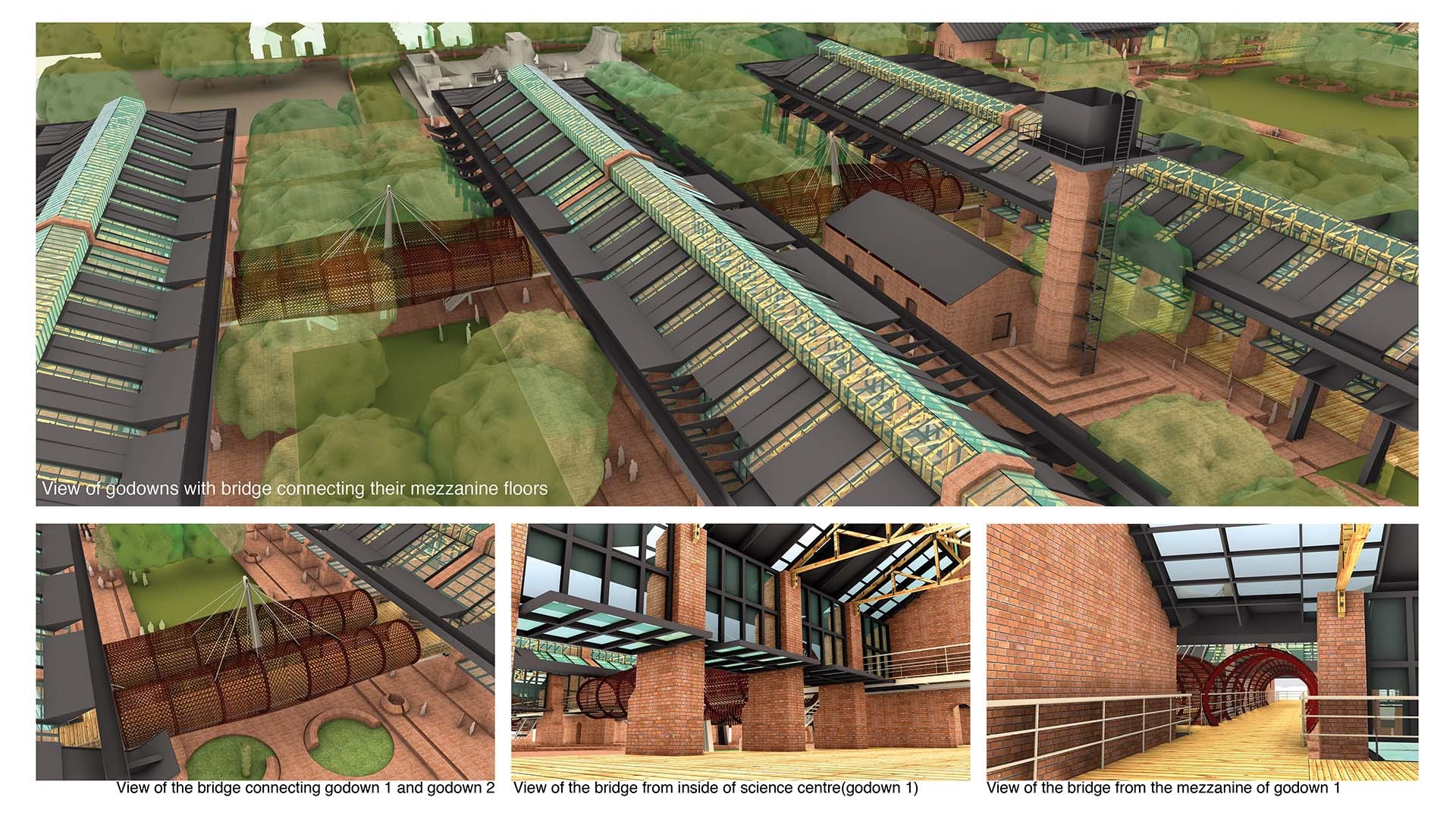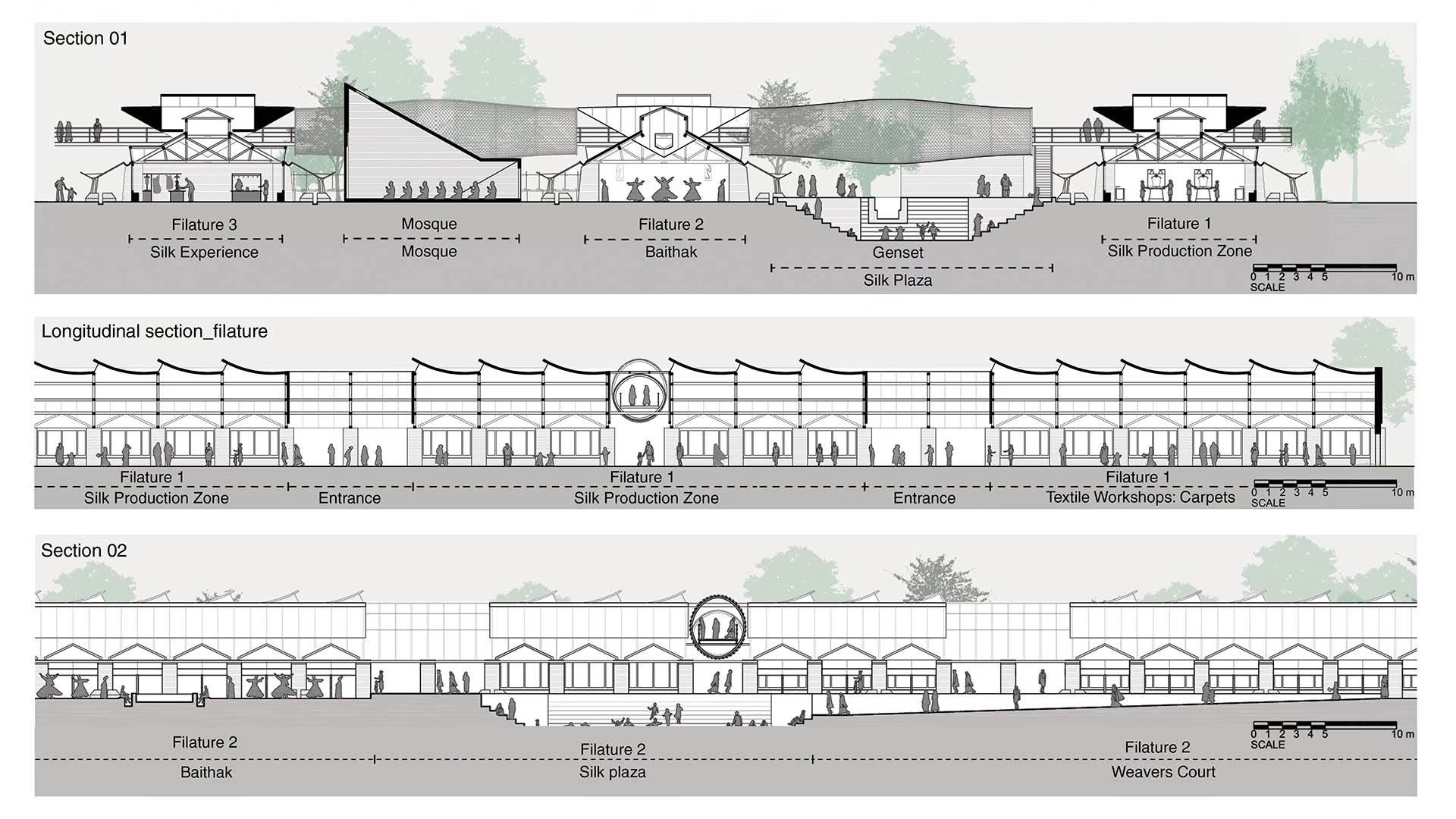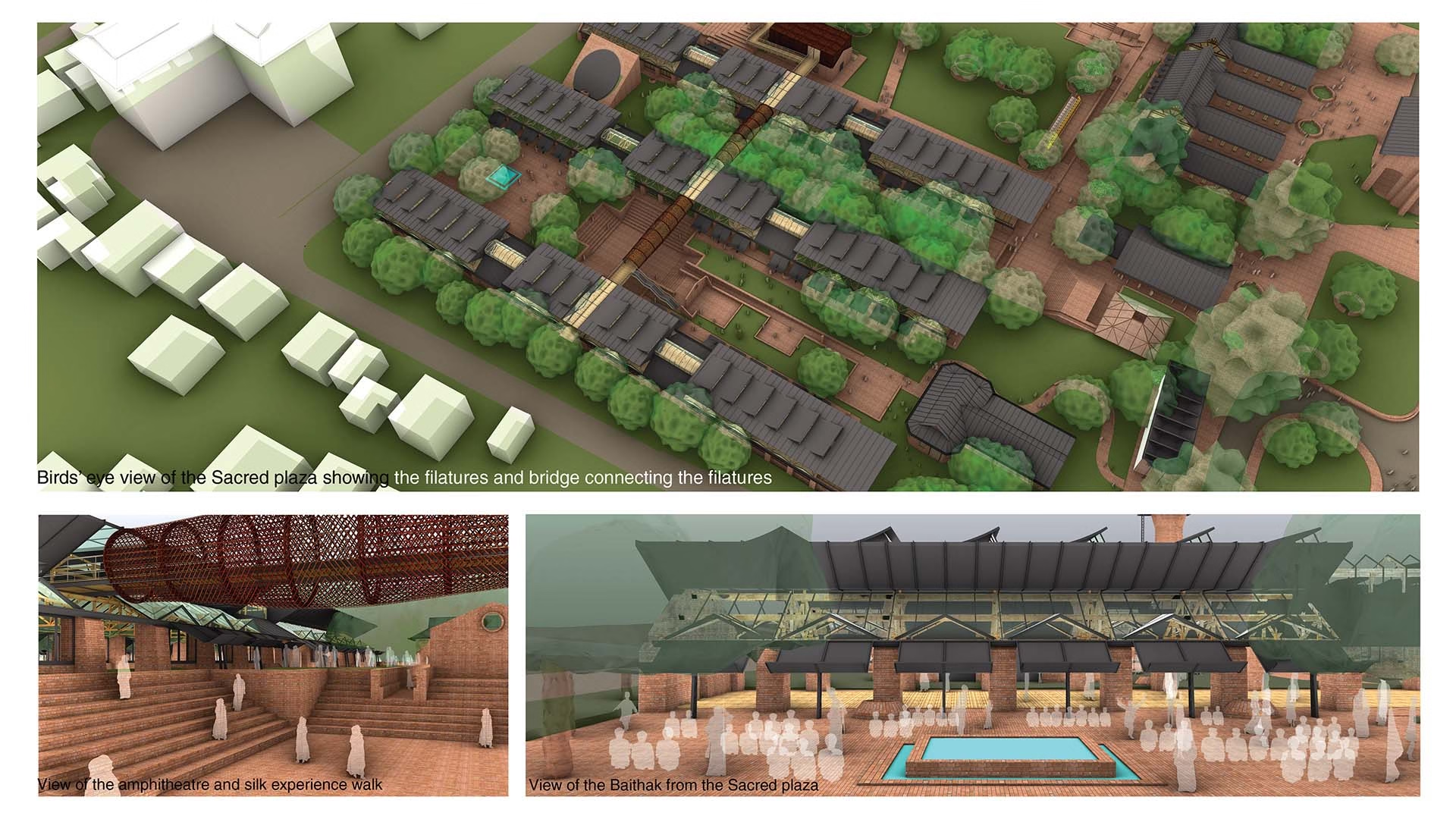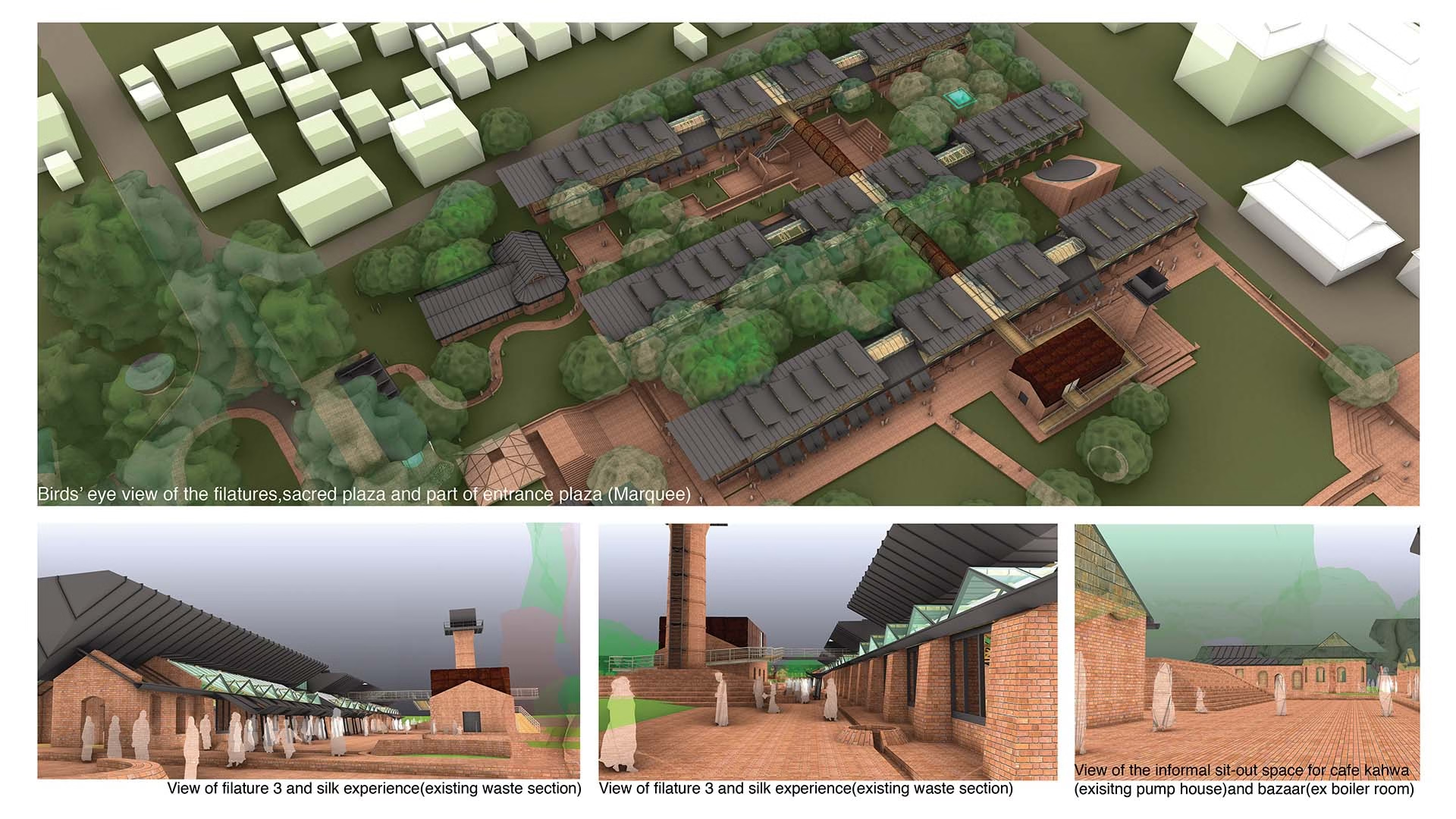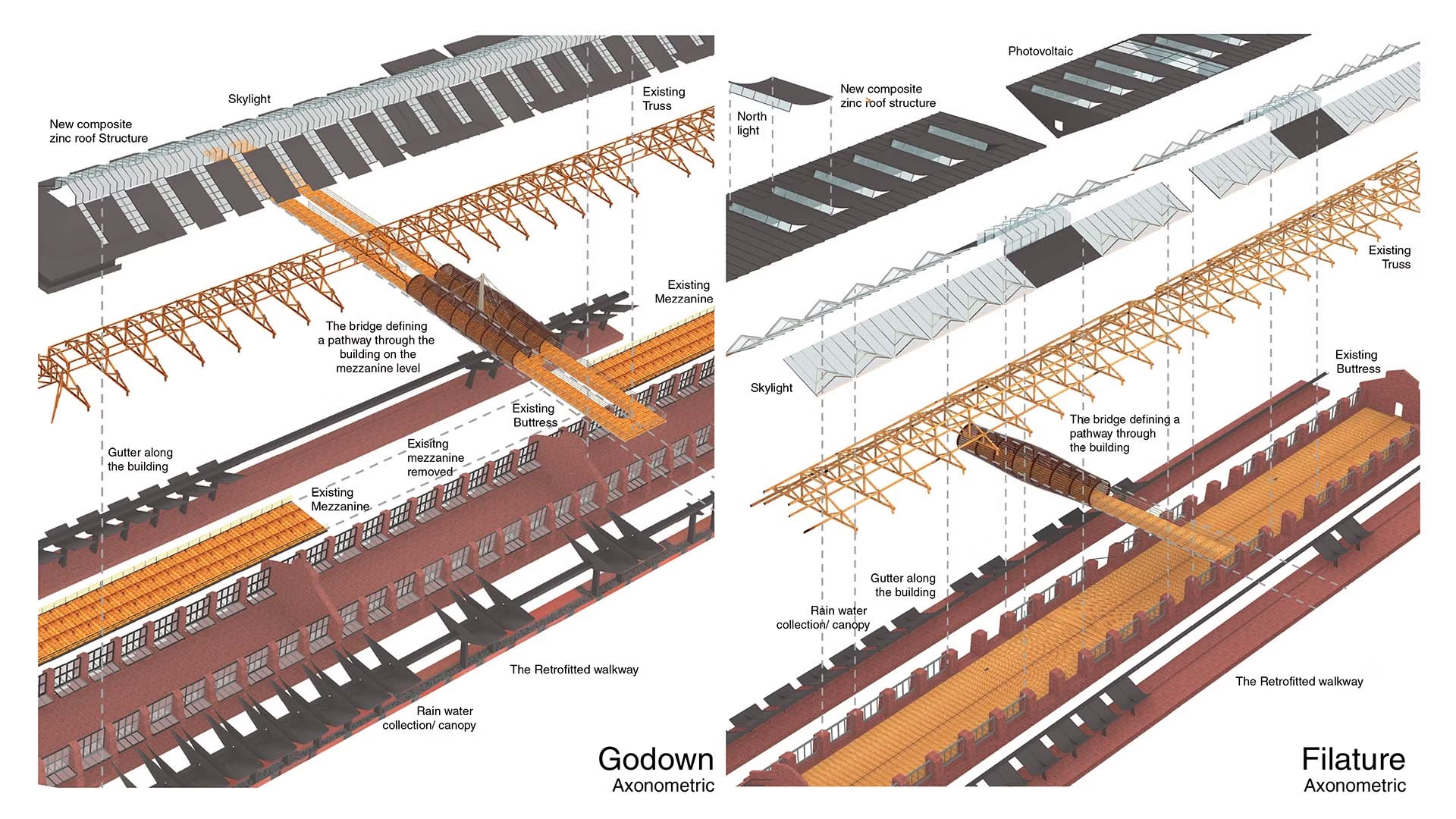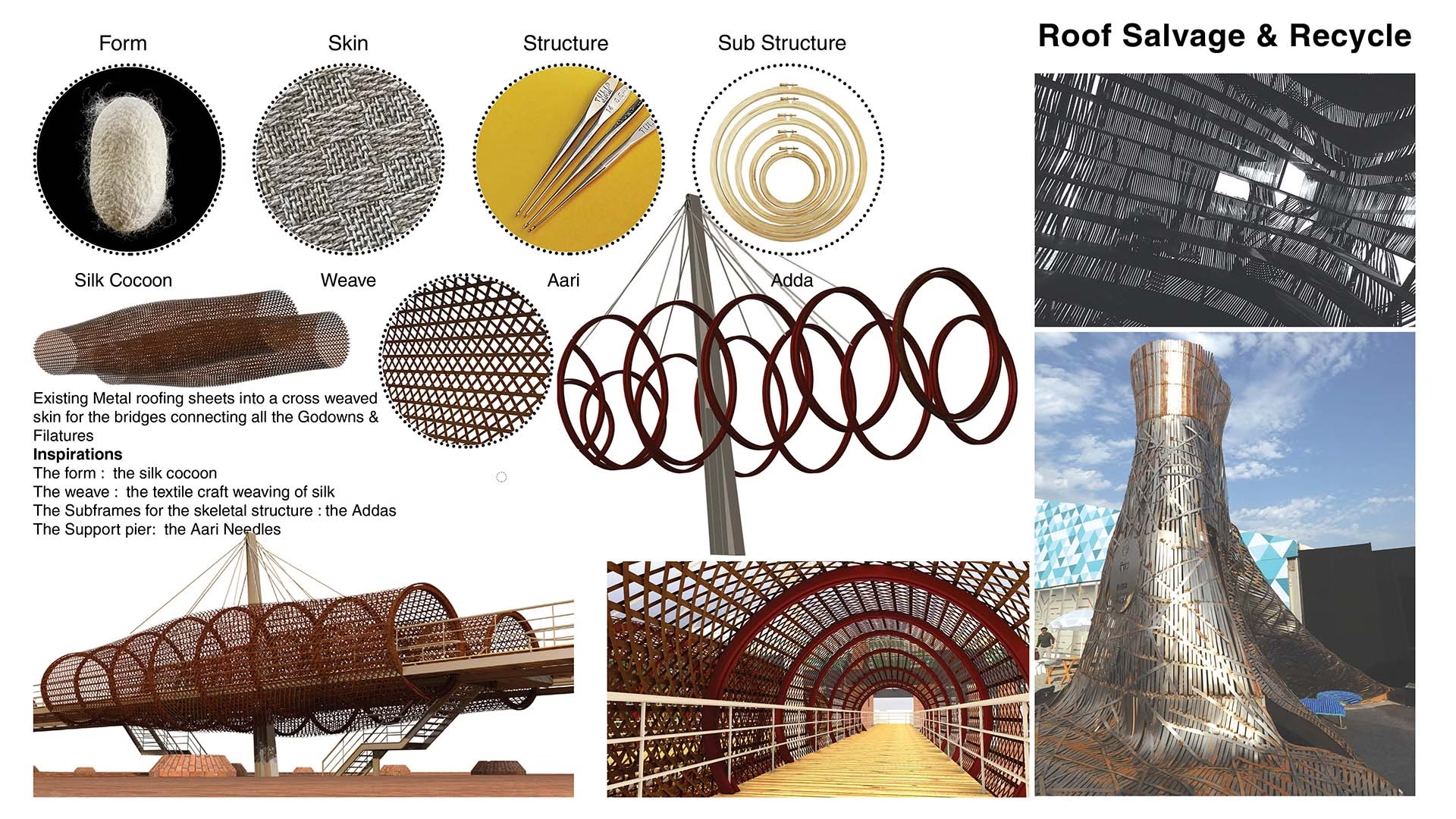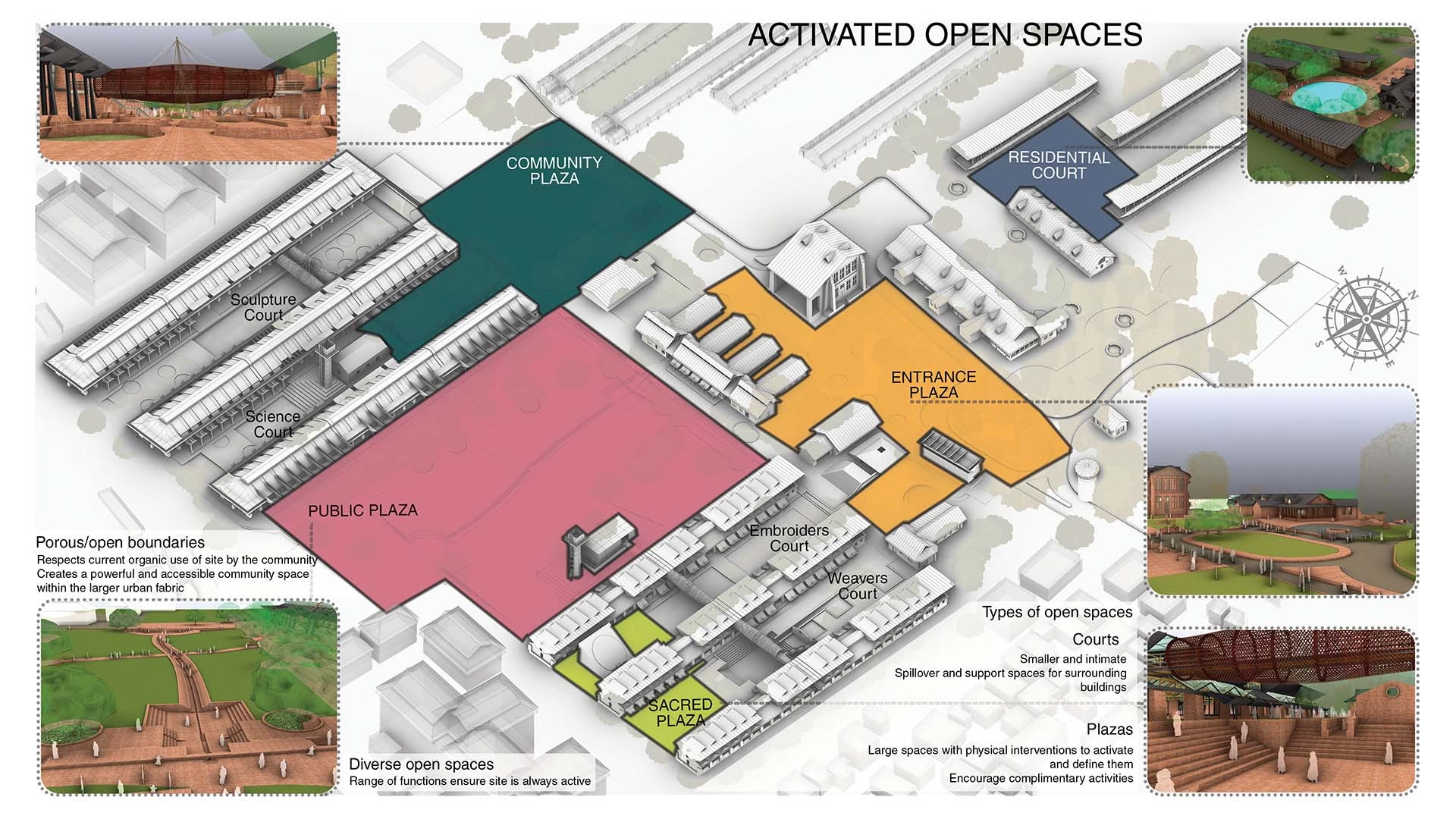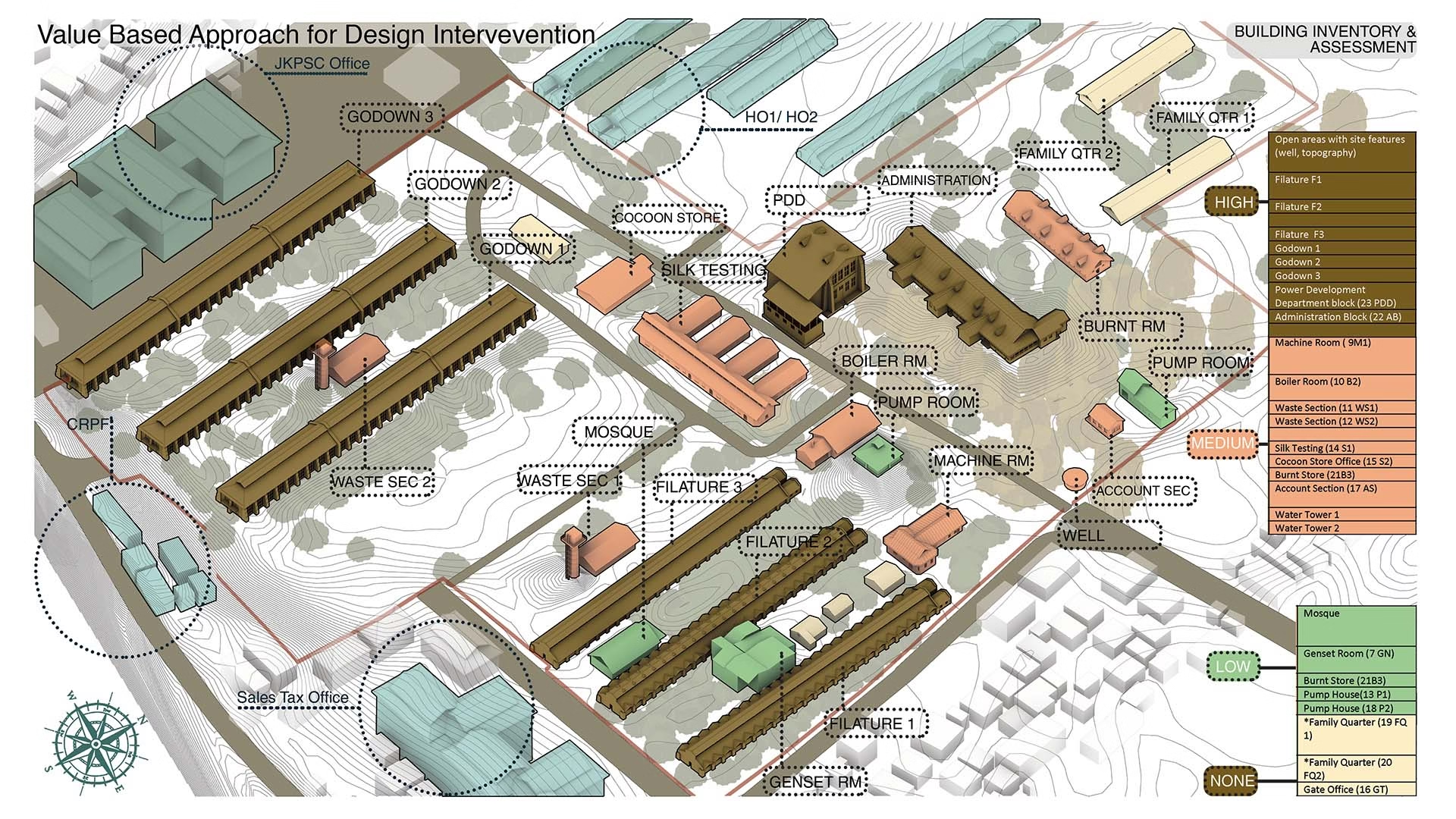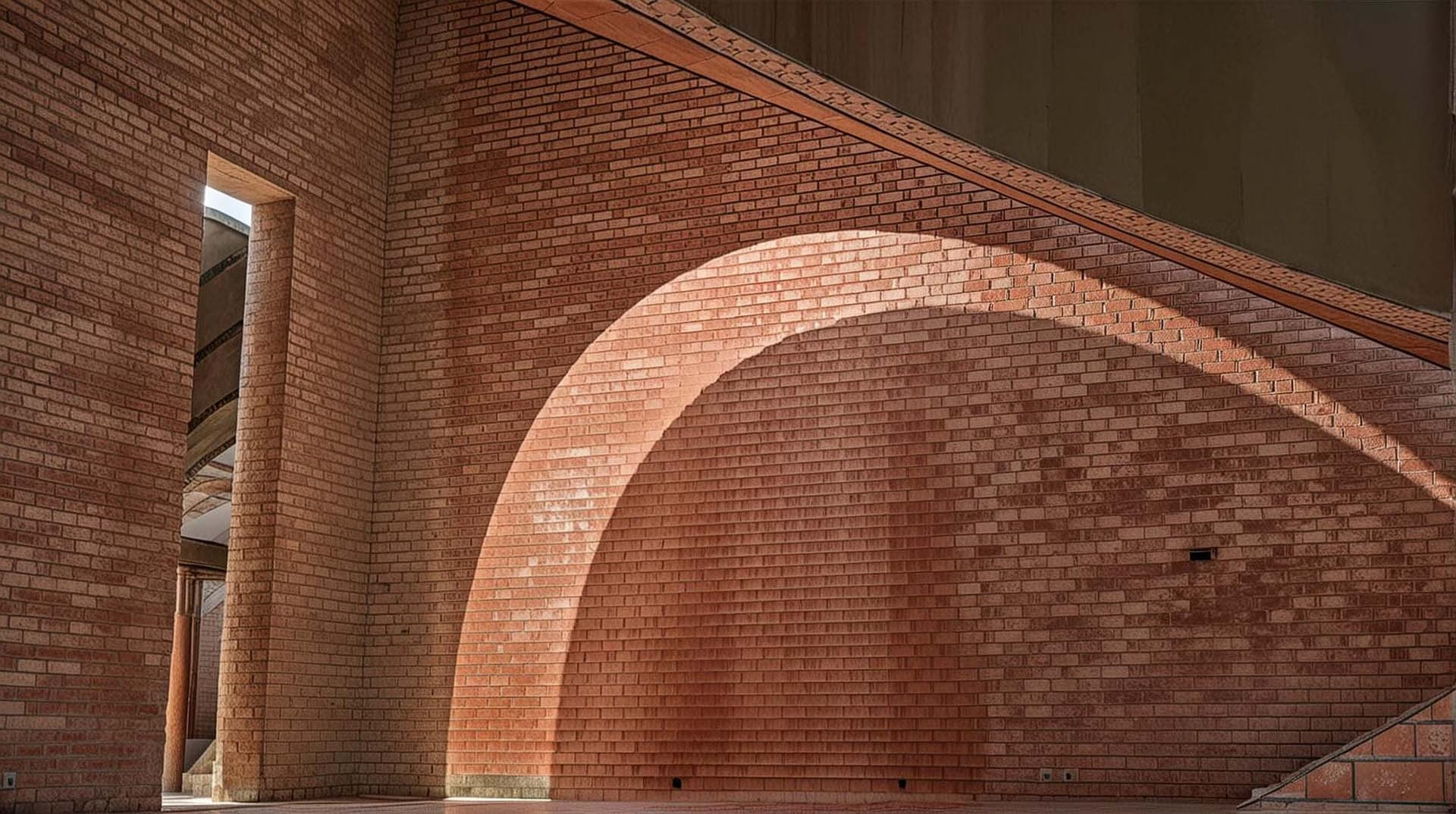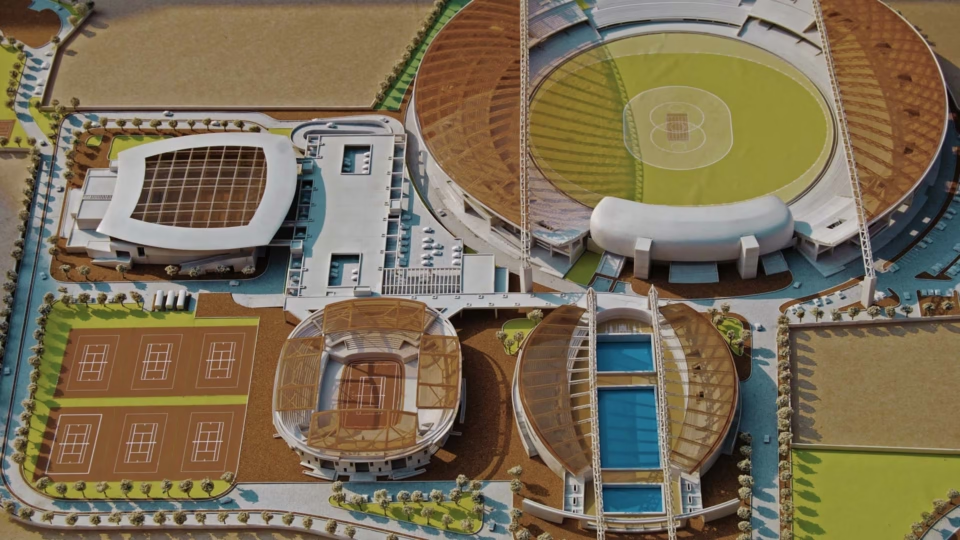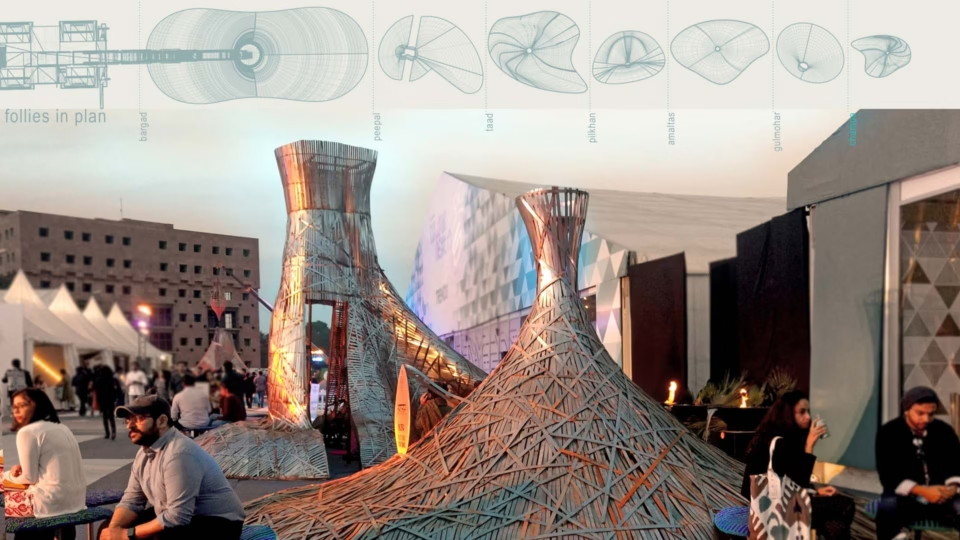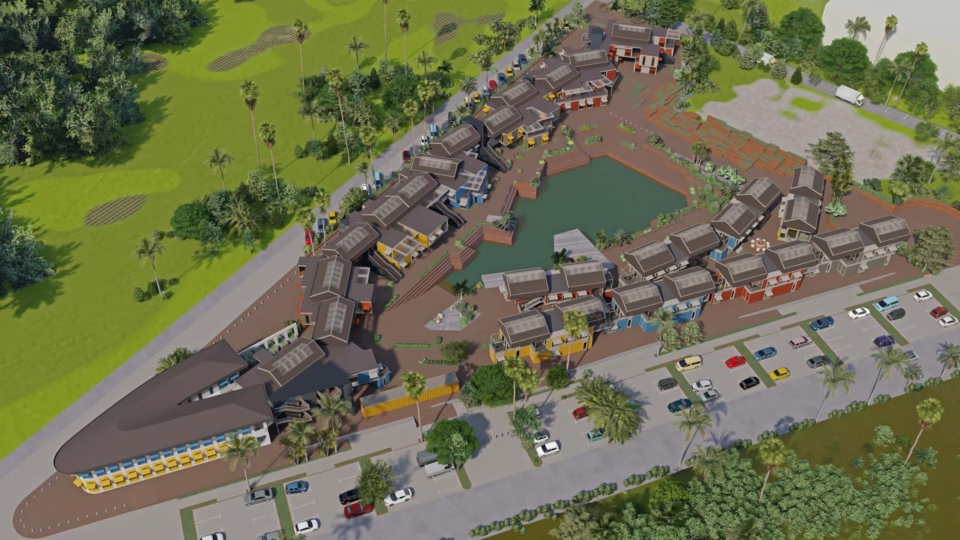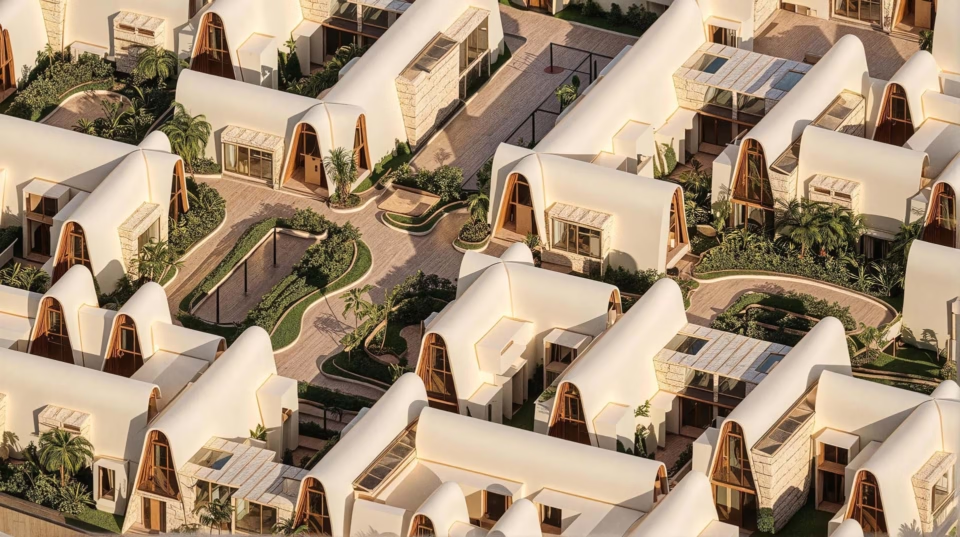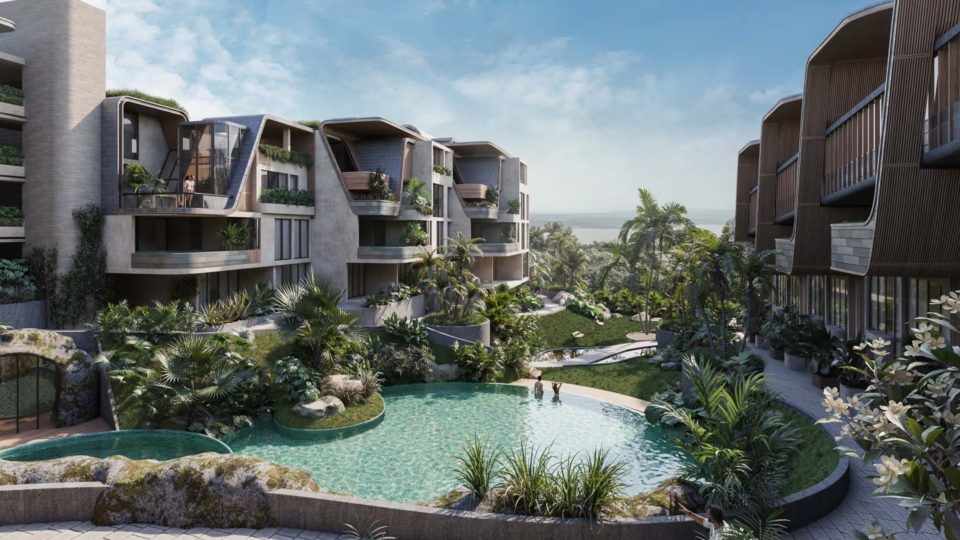A Cultural Hub in Srinagar
Once the humming heart of Kashmir’s silk industry, the Solina Reshamkhana factory stands today as both memory and monument—a twentieth-century industrial ensemble that carries within its brick and timber the story of craft, labor, and global connection. To transform this dormant industrial relic into a vibrant cultural hub is not an act of erasure, but of re-threading—taking the broken warp and weft of history and weaving it into a living fabric of community, creativity, and resilience.
The architectural approach is grounded in conservation. Original godowns, filatures, and storehouses are preserved in their authenticity; their scars and strengths alike are honored. New interventions arrive not as mimicry but as legible counterpoints—light bridges of steel and glass, mezzanines that float within lofty volumes, and inverted metal roofs that harvest water while declaring their contemporary presence. The aim is to safeguard memory while inviting fresh narratives to unfold.
Spatially, the design spins together three strands. First, the architecture of craft and culture, where restored footprints host studios, galleries, coworking spaces, and a silk-experience pavilion—platforms for artisans, artists, and entrepreneurs alike. Second, the landscape of resilience, reimagining the once-utilitarian water channels of the industrial compound as playful kunds, amphitheatres, and shaded courts. Native chinar, walnut, and willow trees stitch the site back into the ecological rhythms of the valley. Third, the urban framework, which opens blurred, porous edges to the surrounding neighborhoods, turning the campus into a democratic commons of plazas, pathways, and community courts.
Every corner resonates with Kashmir’s layered identity. A black-box theatre and Jashn-e-Kashmir bazaar echo the rhythms of festivity. Plinths and amphitheatres host impromptu performances and gatherings. Weavers’ courts and embroiderers’ courts foreground living traditions, while coworking lofts and maker-labs prepare a younger generation to thread heritage into innovation.
The architecture, therefore, becomes more than restoration—it becomes storytelling. It celebrates the poetics of silk and memory, of water and landscape, of community and craft. Reshamkhana is not merely a preserved relic but a reimagined loom: one that continues to weave, to connect, and to create. In its transformation, Srinagar gains not only a cultural hub but also a symbolic act of resilience—where history and modernity, tradition and experimentation, converge to script a future of shared belonging.
